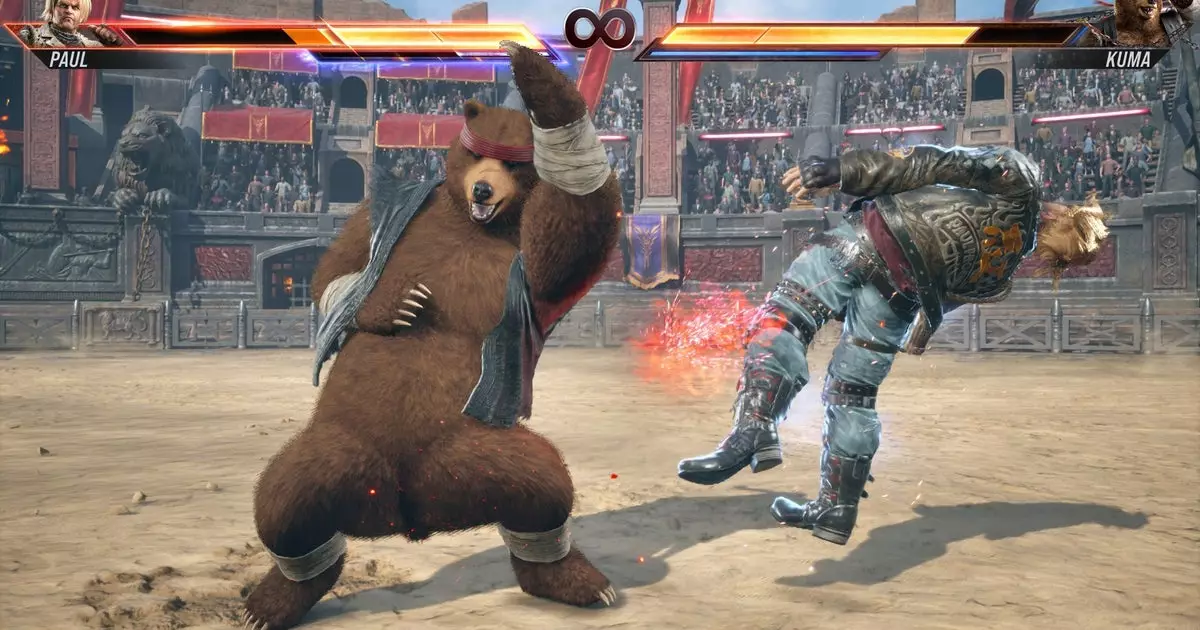The realm of fighting games has always been a juxtaposition of relentless innovation and nostalgic admiration. As developers strive to introduce new mechanics—such as the powers featured in Tekken 8—enthusiasts still find themselves looking back at former glory days. Enter “Good Ass Tekken,” a modification that strips away the flashy additions of the latest installment and reverts gameplay to a more traditional essence reminiscent of Tekken 5. This choice to regress, seemingly, to simpler designs raises questions about the direction of modern gaming and what players truly covet in their experiences—community, challenge, and pure enjoyment.
The Philosophy Behind “Good Ass Tekken”
At its core, “Good Ass Tekken” represents a radical philosophical stance regarding how games should be designed and experienced. The mod’s creator, KulaGGin, asserts that the current trend towards complexity in fighting games has diluted the core enjoyment players once found. By eliminating the heat bar, rage drives, armored moves, and tracking attacks, the mod enhances a focus on fundamental skills like timing, strategy, and basic mechanics. While many might argue that enhancements like the rage state introduce exciting dynamics and a survival mechanism to desperate moments, KulaGGin’s vision for a distilled version presupposes that at its heart, Tekken should be about mastering the art of fighting—not overwhelming players with a barrage of new features.
The Visual and Playable Contrast
Take a look at gameplay footage within “Good Ass Tekken,” and the clarity of its visual presentation stands out immediately. Players are treated to a stripped-back experience where brawling becomes cleaner, less overwhelmed by extravagant animations and flashy UI components that can often distract even seasoned players. The idea isn’t simply to mask the new content but to create an environment where expertise and skill become paramount. In many cases, players may find themselves being able to better appreciate the fighting techniques rather than the spectacle.
Crucially, this mod challenges the perception that innovation is always synonymous with improvement. The balancing act of evolving gameplay while maintaining foundational principles is a conversation that has begun to resonate not just in the Tekken community but across the entire spectrum of gaming. Furthermore, KulaGGin’s changes call for new strategies and tactics, thereby indicating that perhaps too much complexity can lead to an over-saturation of options and choices, which can cause frustration rather than excitement.
Nostalgia Versus Modernity
Nostalgia plays a pivotal role in the ongoing debate about how games evolve. For many players, memories from earlier installments evoke a sense of camaraderie, skill, and challenge. In juxtaposition, modern iterations frequently exaggerate complexity, sometimes alienating long-standing players while trying to appeal to newcomers. “Good Ass Tekken” acts as a vessel for those yearning for a return to a simpler fighting experience, enhancing the idea that gameplay should be accessible yet challenging.
Critics of the mod may argue that nostalgia is a trap—a longing for bygone days that may not hold the same appeal under modern scrutiny. Yet, returning to the essence that made earlier iterations great can also be seen as a way to ground players, reconnecting them with the roots of the genre. When KulaGGin expresses his fondness for “real Tekken,” he’s tapping into a sentiment shared by many life-long fans: that the core gameplay experience deserves celebration, not abandonment.
The Future of Traditional Fighting Games
What remains to be seen is how the gaming community will parse the implications of this mod. Might “Good Ass Tekken” lay the groundwork for developers to create alternative modes in future titles—offering a taste of both worlds? Or will it remain a niche interest, revered by a select group of fighters while the broader industry continues to produce games increasingly laden with features meant to entice fast-paced action?
Ultimately, “Good Ass Tekken” offers more than just a walking down memory lane; it challenges contemporary notions of what constitutes a fulfilling gaming experience. The standout creation signals a desire among players for authenticity, skill, and the return of a classic feel while navigating the complexities of modern gaming trends. In doing so, it raises essential conversations about player engagement, balance, and the purposes of innovation in a genre steeped in history.

